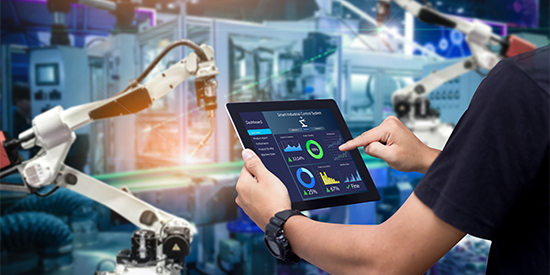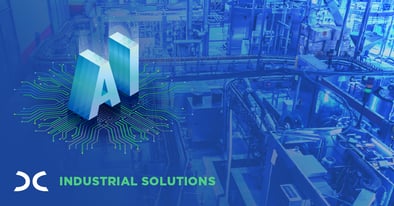AI is Driving New Design Needs for Manufacturing & Industrial Markets

Computer Hardware design remains critical to early-stage design requirements, scalability, and long-term support for equipment manufacturers.
Artificial intelligence (AI) is all around us and we don’t even notice it. Hiding in plain sight, sensors and robots are making our lives better by making smart improvements to the supply chain.
At Walmart stores around the world, your lime selection is improving because the retail giant leverages AI to monitor the quality of fruits and vegetables for sale. The company relies on machine learning and object detection software to filter out the bad limes before they even leave the farm. Farmers themselves also rely on AI to work more efficiently further up the supply chain. Smart systems help them plant crops in more uniform ways, creating precision farming that eliminates potential overlap in tilling or fertilizing. Chemical use is reduced and productivity improves. The value doesn’t stop there. Sensors across vast agricultural lands help farmers predict crop needs and performance, enabling a long-term, proactive approach to environmental challenges.
From our smartphones to our desks and now to our kitchen tables, AI is playing a bigger role than ever, enabling new applications by capturing and using data in new ways.
For large equipment manufacturers of products responsible for inspecting, testing, and deciding things (such as good limes versus the bad – and so much more), the game is changing for how much data is expected and required. Just how fast and furious an impact is AI making in manufacturing? Product inspection is only one market application where OEMs are now required to think much further ahead about how their systems will handle or process massive amounts of data.
Preparing for AI and its impact on hardware design
Smart, connected industrial environments are changing lives and businesses worldwide. Defined as "Industry 4.0", the magnitude of this technology evolution continues to reveal itself in all corners of manufacturing and industrial markets. Data that was always there but too difficult to gather and interpret is now offering value in real-time.
Some examples of how AI is being used today in OEM environments:
- Smart machine vision is monitoring tiny details that improve product quality by flagging defects and automatically responding
- Precision milling is helping factories increase profits by eliminating wasted steel and other resources
- Predictive maintenance improves uptime, smart sensors make adjustments on the fly to reduce emissions
- Machine learning streamlines communication between factory systems and their supply chains
While OEMs have embraced Industry 4.0 as a foundation for designing smart, efficient systems, it is clear that customer demands for artificial intelligence are driving still more innovative strategies. It’s a brave new world and OEMs are tasked with understanding a slate of modern technologies designed to make industrial machines even smarter.

AI enables decision making way beyond the capabilities of the human brain. For embedded OEMs – this means the hardware needs to support the unknown and have the ability to scale as the data dictates.
In embracing this challenge, OEMs must not lose sight of their reality: pursuing AI-centric applications means hardware and processing power will be impacted. For continued success, the role of hardware in system design should be central to the conversation about early stage design requirements, scalability, and long-term support.
For more information on how to prepare for the impact of AI and the potential impact to your company’s success, talk to one of our Dedicated experts at inquiry@dedicatedcomputing.com.

